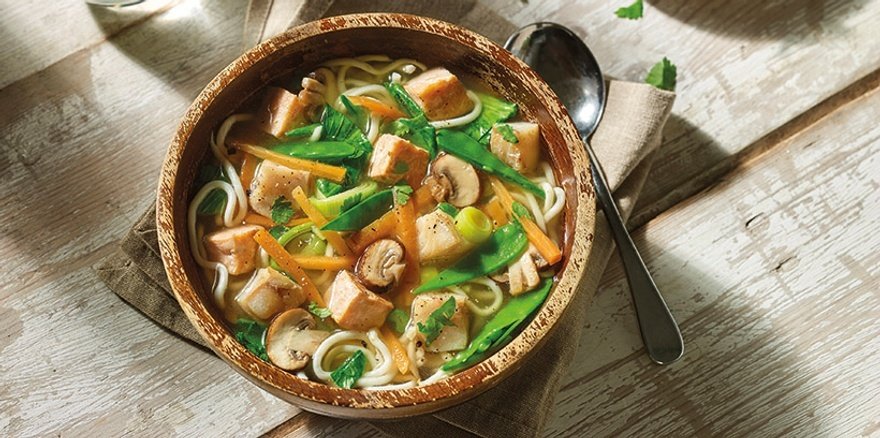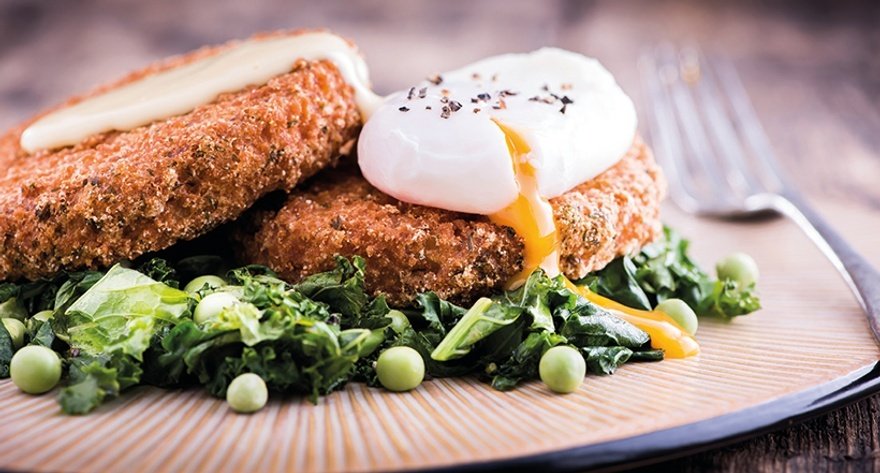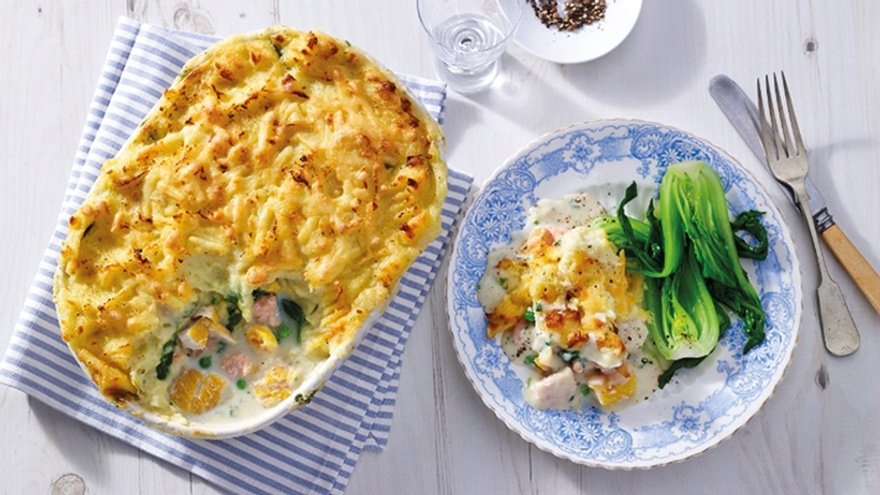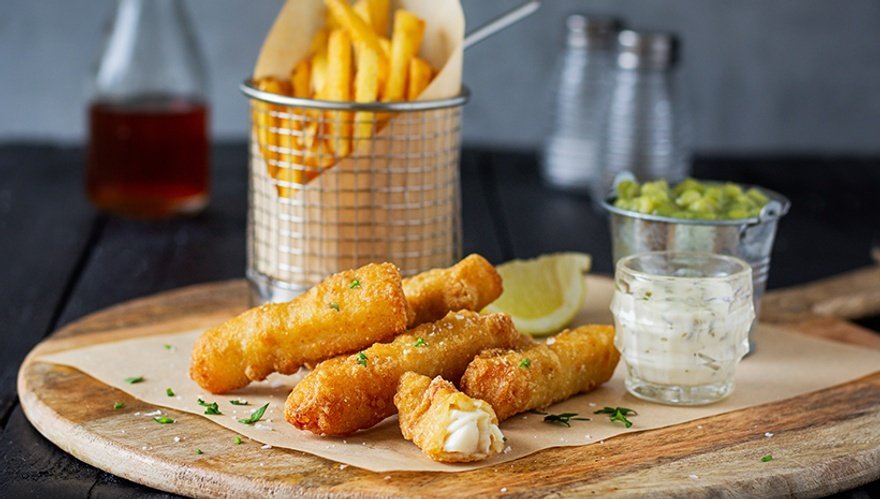An unpredictable couple of years may have rocked the seafood industry, but you can still make waves with a good fish selection. Anne Bruce explores the options when it comes to selecting your seafood
Considering that you can't get further than 84 miles away from the sea anywhere in the UK, fish and seafood plays a relatively low-key role on restaurant menus.
To enjoy the majority of Scottish mussels you need to head to France or Belgium, where moules frites, made with mussels exported from the UK, are ubiquitous. But in the UK, tried and tested options such as cod, haddock, salmon and the great British fish and chip supper are the big hitters.
However, after the choppy waters of the past couple of years, a pandemic and Brexit to be precise, food prices and the supply chain are under pressure. Restaurants are looking at ways to make their menus more cost-effective and add an affordable but special touch.
Seafood and fish, presented in a consumer-friendly way, can play well with this agenda and chime with wider interest in healthy eating and sustainability. So, chefs are starting to drive forward with dishes that bring a variety of fish and seafood to the fore.
Battle the costs
James Baker, Southwest regional executive chef at hospitality foodservice provider BaxterStorey, says that BaxterStorey chefs are encouraged to ask seafood suppliers for advice on what is good that day and consider less mainstream species, such as herring or sardines. Costs are rising on all ingredients and fish won't be an exception, he says. Buying local and seasonal fish is a sustainable option which may also help control costs.
"With the well-reported labour shortages across hospitality, there has been an increased demand for value-added, quality seafood, including squid and prawns," suggests Martin Finegan, sales and marketing manager at Pacific West UK.
These products are simple to prepare, taking pressure away from busy kitchens, and they deliver high-impact, consistent dishes for consumers, he says.
With many outlets offering a reduced menu, having an unusual fresh fish choice on the specials board will drive customer interest, suggests Ian Nottage, head of food development at distributor Sysco Speciality Group.
Options such as Scottish loch-reared trout, Fowey mussels, MSC Dorset clams and Winterbourne chalk spring-reared trout don't need to be expensive, he says: "Including the name of the fishery or provenance of the catch on the menu is a good way to drive extra revenue as, generally speaking, consumers will pay for the story."
Macduff's wild-caught Hebridean langoustines are this sort of hero dish, either poached or pan-seared in olive oil, says John Ashmore, marketing director Europe, Middle East and Africa at parent company Clearwater Seafoods.
Laky Zervudachi, Direct Seafoods' director of sustainability, says customers are encouraged to use menu descriptions such as ‘catch of the day' or ‘market fish'. Varying the species can also help with cost. Alongside fresh options, frozen products, especially cod and haddock fillets, remain key for many operators. Particularly if landings of fresh fish are poor, adds Ian Nottage: "Frozen gives flexibility of stockholding and price points by allowing the chef to defrost their fish and seafood as and when required."
Using frozen seafood also means that chefs can offer a wider variety of species on menus year-round, adds Joel Carr, development chef at Young's Foodservice. This helps with menu planning, reducing waste and improving portion control as well. Chefs can add a twist to frozen favourites, such as fish and chips by serving with a katsu curry sauce for a new take, he suggests.
With food prices rising, operators need to use all ingredients, whether frozen or fresh, efficiently. Stelios Theocharous, managing director of Ceres, says: "Fish is no longer a cheap commodity. Compare it to the price of steak, gram for gram, and for many species there's very little difference right now."
Chefs should use every last scrap, he urges. Fish bones and heads can make great stocks, while trimmings can be used in fishcakes.
The great thing about fishcakes, Theocharous says, is that they can be tailored to suit all sectors, from a classic cod and parsley for contract caterers to a luxury salmon and prawn for fine dining restaurants. "You can even make smaller versions and serve them as starters, canapés or children's options," he says.
In fact, the distinction between chippie and fish restaurant ranges is also blurring, says Paul Williams, managing director of supplier KFE, which specialises in frying ranges. "Whereas 10 years ago, there were seafood restaurants and there were fish and chip restaurants, there's now a much bigger crossover between those markets as there is value in extending menus."
Choosing familiar serving formats for fish makes it more accessible to consumers, whatever the venue. Dishes such as fishcakes and goujons make a great starter, Zervudachi says, while fish curries and fish tacos are a great fit with casual dining menu formats and enable chefs to use a broader range of species according to availability.
Consumers do need to be gently encouraged to try new fish species. Baker suggests describing what the fish tastes similar to on menus. A tusk fish, for example, tastes like monkfish, and can be treated like one by the chef, serving it curried or wrapped in Parma ham. "If it's an ugly fish, don't put a picture of it up!" Baker advises.
Spice it up
Chefs can encourage diners to try new sea-food produce with small plates or amuse bouches made with fish, Baker recommends. Tying in with flavour trends can also make fish dishes more approachable. Flavours such as Korean gochujang red pepper paste or serving fish with miso, seaweed or samphire is on-trend, says Baker. Ceviche and escabeche, both south American marinated fish techniques, are becoming increasingly popular, Nottage says. And Asian seared and tataki-style tuna is finding its way onto mainstream menus and is no longer the preserve of sushi and robata restaurants.
EHL Ingredients offers on-trend spice blends for fish soups such as moqueca (Brazilian fish soup), chowders, cioppino (San Franciscan fish and shellfish) and maeuntang (Korean fish soup), says Tasneem Alonzo, joint managing director at Lähde at EHL Ingredients.
Hawaiian poké bowls commonly feature Ahi fish or tuna, but other species of cubed and marinated seafood are also an option for light bite menus or for informal dining.
Healthy eating
One big selling point for fish, as consumers turn away from meat, is its health credentials. Since the pandemic consumers have been focused on healthy eating and "obsessed with protein", a big selling point for seafood, Baker says. The benefits of oily fish, such as its omega-3, protein, amino acids and low fat, are well documented. Chefs can use plant protein such as lentils alongside fish in dishes, which allows it to stretch further, chiming with the plant-based trend, he adds.
For a premium healthy option, Skrei, as Norway's migratory cod is known, has reached the shores of northern Norway after its 1,000km journey from the depths of the Barents Sea, and is in season until April, says Hans Frode Kielland Asmyhr, UK director of the Norwegian Seafood Council. Skrei has great nutritional value: a portion provides the recommended daily amount of omega-3, as well as vitamins A and B12. And for the fourth year in a row, Norwegian aquaculture companies have come out top for the world's most sustainable protein production, adds Frode Kielland Asmyhr.
Zervudachi at Direct Seafoods adds: "Sustainability and health concerns go hand-in-hand. As more younger consumers in particular adopt a flexitarian or pescatarian approach to their diet, they are reducing meat and increasingly opting for fish choices. These consumers also expect sustainability to be factored in by chefs planning menus."
This consumer shift from meat is an opportunity to increase the scope of the seafood menu and offer a more plant-based menu overall, says Dr Daniel Sanchez, fish welfare research manager at Compassion in World Farming. Restaurants must encourage a more diverse, sustainable seafood offering, such as mussels, clams or fish reared and caught using methods regarded as sustainable, he urges.
By sourcing fish from Marine Stewardship Council (MSC)-accredited sources, or other internationally recognised sustainable fishing standards, you can encourage the management of global fish stocks and help to protect vital ecologies, supplier Paramount 21 echoes.
For aquaculture, the phrase ‘RSPCA Assured' covers welfare parameters for salmon and trout, Sanchez explains. Friends of the Sea now have certifications that cover welfare parameters for a multitude of species; while other certifications, Global GAP and ASC, are in the process of improving their policies. Organic production standards can also be good references. MSC is the biggest certifier for wild-caught fish, but it does not cover fish welfare.
For chefs, a knowledge of the supply chain is crucial in serving fish, and keeping close to the supplier is probably the key to navigating issues of sustainability. If chefs have a firm grip on how to prepare the variety of species on offer, the opportunity won't slip from their grasp.
Suppliers
Ceres www.worldofceres.com
Clearwater www.clearwater.ca
Direct Seafoods www.directseafoods.co.uk
EHL Ingredients www.ehl-ingredients.co.uk
KFE www.kfeltd.co.uk
Norwegian Seafood Councilhttps://en.seafood.no
Pacific West www.pacificwestfoods.co.uk
Paramount 21 www.paramount21.co.uk/
Sysco www.sysco.com
Young's Foodservice www.youngsfoodservice.co.uk
Continue reading
You need to create an account to read this article. It's free and only requires a few basic details.
Already subscribed? Log In








